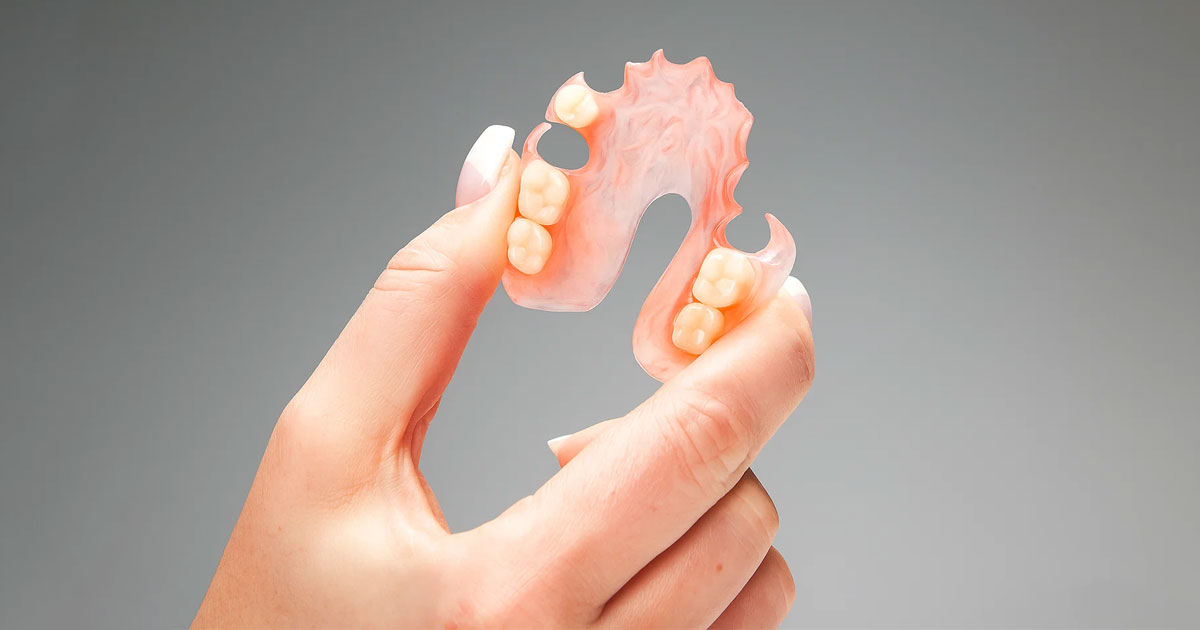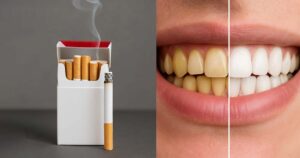Losing teeth in the upper jaw can have many unpleasant effects on your life. It is not only something you will notice when you look in the mirror; it can also impact your speaking, eating, and even your confidence. Flexible partial dentures can give you a natural and comfortable way to replace missing top teeth. These dentures are made out of lightweight and malleable materials. They can adjust to your mouth for a gentle fit. If you’re looking for a practical and natural-looking solution to replace your missing upper teeth, partial dentures are exactly the answer to your needs. In the following, we will explain the advantages and specific features of this method to assist you in making the best decision for replacing your teeth.
What Are Flexible Partial Dentures for Upper Teeth
Flexible partial dentures are removable dentures made from flexible materials such as nylon or thermoplastic resin. They are ideal for replacing one or multiple missing teeth on top. Flexible dentures work differently compared to traditional hard dentures because they can bend to fit your gums without any discomfort. They will fit perfectly on your gums without using any metal clips or any sort of adhesive. They will seamlessly blend with your gums, and this makes them ideal for placement on top. Flexible dentures have been popular with many due to their comfort, strength, and natural appearance.
If a beautiful and natural appearance is your priority, this method, alongside other cosmetic dentistry techniques, can be the best solution for replacing missing teeth, especially in the upper jaw.

Key Benefits of Flexible Partial Dentures for Upper Teeth
If you find yourself in a situation where you have lost some of your upper jaw teeth, you will certainly look for ways to replace them. Fortunately, there are various methods, but as we mentioned on WebMD, one of the least troublesome of these methods is flexible partial dentures, which is particularly suitable for the upper jaw. In the following, I will mention some of the most important advantages of using this method:
1. Exceptional Comfort
It can confidently be said that the greatest advantage of using flexible partial dentures is their comfort and flexibility. This type of denture adapts well to the shape of the mouth, as well as the form of the jaw and gums, and because it is made from soft and flexible material, using it is accompanied by exceptional comfort.
2. Natural Aesthetic Appearance
These dentures are made out of gum-colored materials that easily blend with your mouth. These dentures do not show any metalwork, which makes your smile natural, especially if you’re replacing your top front teeth.
Related Article: Teeth Whitening for Smokers: The Best Options
3. Durability and Flexibility
The materials used in flexible partial dentures do not break or crack, even if dropped. This is due to their flexibility. They have a long life and require minimal repair or replacement.
4. Better Fit and Stability
Due to their ability to adjust to your natural mouth shape, these dentures fit securely while speaking or eating. Not only does this boost your confidence, but it will require minimal adjustments.
5. No Need for Adhesives or Metal Clasps
Flexible partial dentures typically stay in position without any adhesive or visible metal clasps, thus improving patient comfort and aesthetic appeal for persons with missing upper teeth.
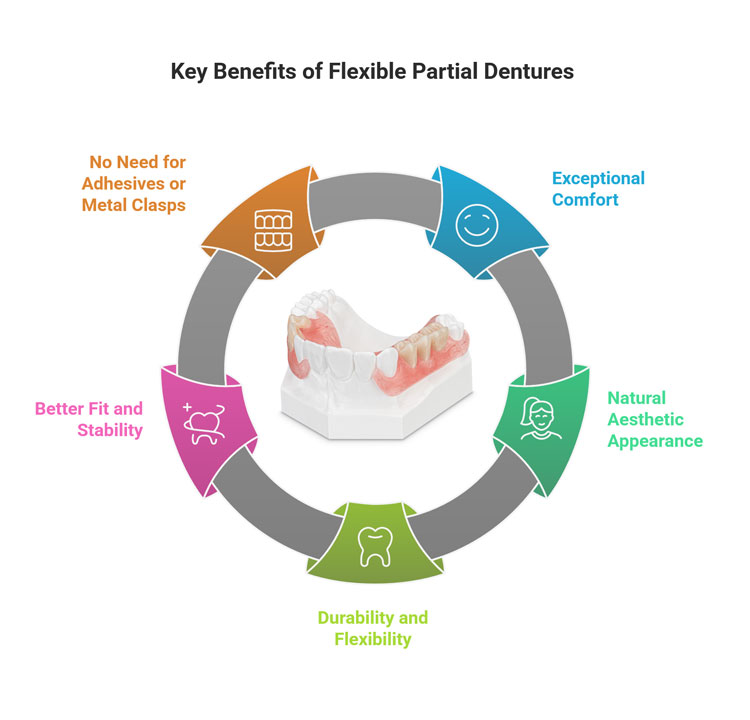
Why Choose a Flexible Partial Denture for the Upper Jaw
Your upper jaw and teeth form the most important part of your smile. Thus, appearance and comfort are top features to consider. Flexible partial dentures are made with these considerations in mind. These dentures ensure a smooth transition between your natural teeth and your new ones. They enable you to smile without any doubts. Speaking and eating will also be easier without any discomfort. Many patients have found another advantage with this type of denture: its material is malleable and can easily adhere to the tissues of your top jaw. Here is a comparison for you to easily see the uniqueness of this choice:
| Feature | Benefit for Upper Jaw |
| Lightweight design | Easier speech and eating |
| Gum-colored material | Natural, aesthetic appearance |
| Flexible fit | Reduced irritation and better comfort |
| Secure placement | Minimal movement during use |
| Non-metal clasps | Better look for visible upper teeth |
Related Article: How to Choose the Best Toothbrush
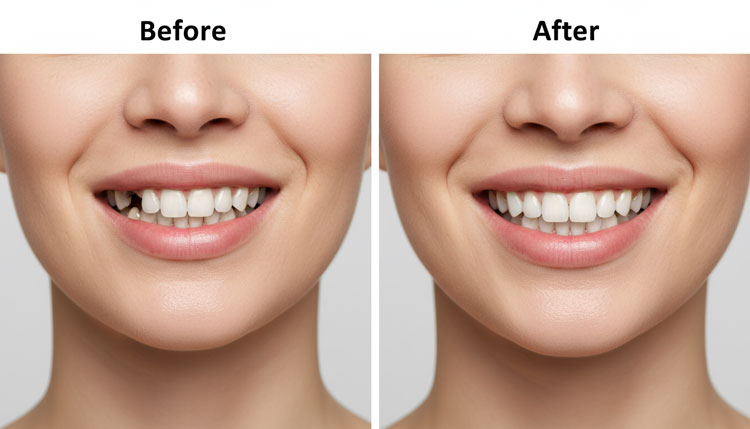
Comparing Flexible Partial Dentures with Traditional Options
Flexible dentures are quite different from traditional rigid denture types made out of acrylic or metal. Traditional dentures usually involve metal clasps, which can sometimes appear visible. However, this is not the case with flexible dentures, which are softer, more lightweight, and even more natural. They can easily adjust to mouth movements for a better fit with a tighter seal. They are easier to maintain due to their flexibility and lack of vulnerability to breakage.
Main Differences:
- Flexible dentures use soft thermoplastic or nylon materials, while traditional ones are usually rigid.
- Flexible dentures adapt naturally to your gums, offering more comfort.
- Traditional dentures may need adhesives or metal parts that can irritate soft tissues.
Restore Comfort and Confidence with Flexible Partial Dentures
At Danforth Dentistry Clinic in Toronto, we specialize in comfortable and natural-looking flexible partial dentures for upper teeth. Let our team help you restore your smile with confidence.
How to Care for Flexible Partial Dentures
Flexible partial dentures can last longer if properly taken care of. They must be cleaned with water after each meal to wash out food residues that can easily cause discoloration. To clean these dentures, you can use a soft-bristle toothbrush and a non-abrasive cleaner on a daily basis. Never use hot water, which can cause these dentures to warp. They should be soaked with a special cleaning solution every night.
Simple Daily Care Routine:
- Rinse your dentures after every meal.
- Gently brush with a non-abrasive cleaner.
- Soak overnight in denture solution.
- Avoid using regular toothpaste, which may be too harsh.
- Schedule routine dental visits for inspection and adjustment.
These are the steps that would help keep flexible dentures clean, comfortable, and retentive.
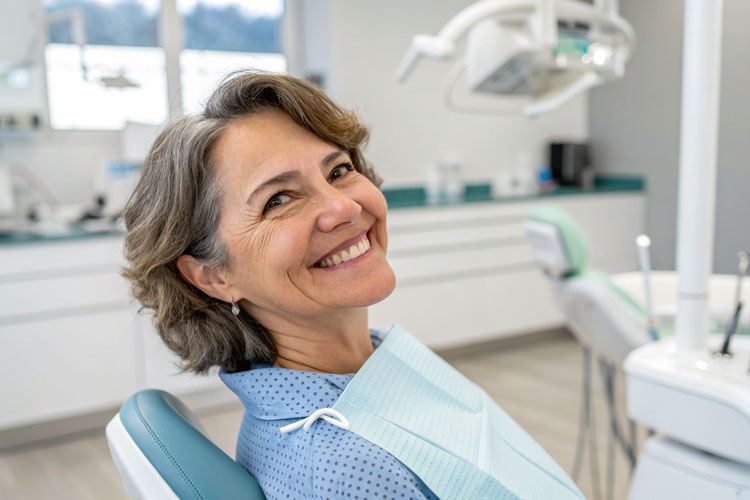
Who Is an Ideal Candidate for Flexible Partial Dentures
Partial dentures are recommended for individuals who have lost several upper teeth but still have healthy remaining ones. Flexible partial dentures can be ideal for individuals with sensitive gums or those who might be allergic to traditional denture materials. These types of dentures are recommended for individuals with sensitive gums.
You might be a good candidate if you:
- Have missing upper teeth but stable surrounding ones.
- Prefer a removable and comfortable dental solution.
- Want an affordable alternative to implants or bridges.
- Need a lightweight option that feels natural.
Many patients will find that flexible dentures represent the ideal blend of comfort, function, and beauty.
Trusted Care, Tailored for You
Experience the Comfort of Flexible Partial Dentures
Flexible partial dentures are ideal for tooth replacement in terms of providing maximal comfort, aesthetic appeal, and functionality. They are made up of lightweight materials that are malleable, offering a natural feel and improved mastication and confidence with your smile. Partial dentures can be used for both one-tooth and multiple-tooth replacements.
At Danforth Dentistry Clinic in Toronto, our team of qualified dentists is experienced in offering top-class flexible partial dentures and other restorative procedures. Whether it is dentures, implants, dental bridges, or cosmetic dentistry, we ensure that you regain your smile with us. Contact us now and see how we can help you smile confidently.
Related Article: Types of Dental Implants: Complete Patient Guide
FAQ
-
What are flexible partial dentures?
Flexible partial dentures are types of removable dentures made with soft and light materials. These replace missing teeth and harmonize well with your gums.
-
Are flexible partial dentures comfortable to wear?
Yes, these dentures are made to adjust with your mouth’s natural movements to avoid irritation while providing a secure fit for your top teeth.
-
How long do flexible partial dentures last?
If properly cared for, flexible partial dentures can last for a considerable number of years.
-
How should I clean flexible partial dentures?
They can be gently brushed with a soft toothbrush and soaked overnight in a cleaning solution that is recommended by a dentist.
Have you tried flexible partial dentures or are you considering them for your upper teeth? Share your experiences or questions in the comments below—we’d love to hear your thoughts and help you learn more.

